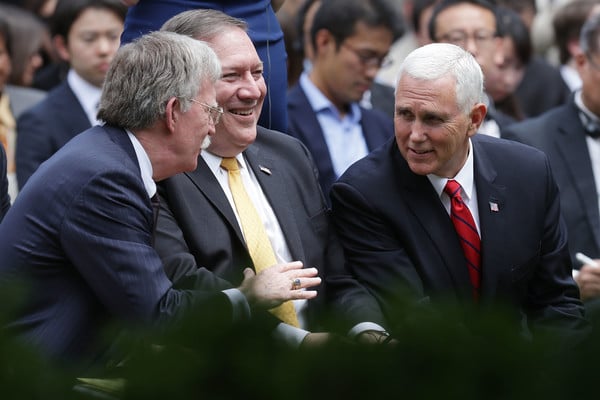
Two years ago, as Donald Trump ascended to the presidency, you might have thought that, if nothing else, neoconservatives had finally been put out to pasture. In the campaign, Trump had blasted the neocons’ signature policy, the war in Iraq, as a “big fat mistake,” and repudiated their ostensible program of turning nations into liberal democracies. He paid no political price with voters, and probably the opposite, as white evangelicals once drawn to George W. Bush’s “freedom agenda” flocked to Trump in record numbers.
Even allowing for Trump’s opportunism and inconsistencies, his election victory appeared to deal a double blow to the neoconservative persuasion. It not only broke the neocons’ hold on the Republican Party, but also, in the same stroke, revealed that they lacked a popular constituency. There they were, free-floating pundits, alone and exposed—neither intellectually credible nor politically representative.
Why, given this development, would Republican politicians respond by once again seeking out the neocons’ counsel? Why, far less, would Democrats? And why would much of the news media, grappling with historic levels of public distrust, accept neoconservatives and neoconservatism as the baseline for foreign policy analysis?
Yet exactly this has happened. Today, neoconservatives are riding high once more, in the White House, on Capitol Hill, in the most prominent organs of opinion. The Weekly Standard may have shuttered, but anti-Trump neocons enjoy increasing influence in the center of the Republican and Democratic parties and in publications like The Atlantic and The Washington Post. Others, meanwhile—call them neo-neoconservatives, or post-neoconservatives—are busy making policy in the Trump administration. They’ve gone with Trump for good reason. Although he is repudiating the export of liberal democracy and degrading its practice at home, Trump is also reasserting the American right’s pugnacious antipathy to “globalism.” He is acting as many within the neocon firmament have long favored, positioning the United States against a vicious world and fetishizing brute force in response.
As a result, Trump has forced neoconservatives to decide, for the first time, whether they are more against “totalitarianism” or “globalism.” If anti-totalitarians take Trump to be perverting what they hold dear, anti-globalist neocons have found in Trump a kindred spirit and vehicle for power. Yet, even as they are fracturing, neocons are flourishing. They have bypassed the political wilderness and vaulted themselves to the vanguard on either side of the Trump divide. A new configuration of right-wing foreign policy is coming into view, and neocons are in the lead once more.
Fair Use Excerpt. Read the rest here.

